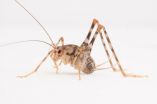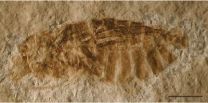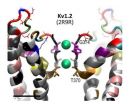(Press-News.org) Barcelona, Spain – Tuesday 2 September 2014: Coffee increases the risk of prediabetes in young adults with hypertension who are slow caffeine metabolisers, according to results from the HARVEST study presented at ESC Congress today by Dr Lucio Mos from Italy. People who drank more than three cups of coffee per day doubled their risk of prediabetes.
Dr Mos said: "Lifestyle factors are very important for the prognosis of young people with hypertension. In a previous analysis of HARVEST (Hypertension and Ambulatory Recording VEnetia STudy) we found that coffee was a risk factor for the development of sustained hypertension and that the risk was modulated by the genetic background of the individual. Slow metabolisers of caffeine were at increased risk of hypertension."(1) ( 2)
He added: "As type 2 diabetes often develops in hypertensive patients at a later stage, in the present study we examined the long term effect of coffee drinking on the risk of developing prediabetes in the participants of HARVEST, a prospective longitudinal study of young subjects screened for stage 1 hypertension."(3)
HARVEST included 1 180 patients aged 18 to 45 years who had stage 1 hypertension but did not have diabetes. Genotyping of CYP1A2, the enzyme that metabolises caffeine, was performed in 639 patients (4). Prediabetes was defined as fasting plasma glucose between 100 and 125 mg/dL at the final study visit.
The researchers found that 74% of participants drank coffee. Among the coffee drinkers, 87% drank 1-3 cups per day (moderate) and 13% drank more than 3 cups per day (heavy). Analysis of the CYP1A2 genotyping revealed that 42% of participants were fast metabolisers of caffeine and 58% were slow metabolisers.
After 6.1 years, prediabetes was diagnosed in 24% of patients. Moderate coffee drinkers (1-3 cups/day) had a 34% increased risk of developing prediabetes compared to abstainers and heavy drinkers (more than 3 cups/day) had a doubled risk. This association was stronger in patients who were overweight or obese.
However, the risk of prediabetes related to coffee consumption differed according to the CYP1A2 genotyping. The risk of prediabetes associated with coffee intake was increased only in slow caffeine metabolisers, with a hazard ratio of 2.78 (confidence interval 1.32-5.88, p=0.0076) for heavy drinkers. In contrast the risk of prediabetes was not increased significantly among the fast caffeine metabolisers.
Dr Mos said: "Our study shows that drinking coffee increases the risk of prediabetes in young adults with hypertension who are slow caffeine metabolisers. The risk is even greater if these individuals are overweight or obese, and if they are heavy drinkers of coffee."
He added: "Slow caffeine metabolisers are exposed for a longer time to the detrimental effects of caffeine on glucose metabolism. Thus, the effect of coffee on prediabetes depends on two factors, the amount of daily coffee intake and the individual's genetic background."
He continued: "Young-to-middle-age people with hypertension should be aware that coffee consumption may increase their risk of developing diabetes in later life. Genotyping for the CYP1A2 gene polymorphism could help them to better know their risk. Carriers of the slow *1F allele, who are slow caffeine metabolisers, should abstain from drinking caffeinated coffee."
Dr Mos concluded: "The results of the HARVEST study suggest that in patients with hypertension, caffeinated coffee should be considered a dietary risk factor for prediabetes. This risk applies especially to slow caffeine metabolisers and to patients who are overweight or obese. Our findings contradict previous epidemiologic studies that have advocated coffee consumption as a means to lower the risk of type 2 diabetes mellitus."
INFORMATION:
References
(1) Palatini P, Ceolotto G, Ragazzo F, Dorigatti F, Saladini F, Papparella I, Mos L, Zanata G, Santonastaso M. CYP1A2 genotype modifies the association between coffee intake and the risk of hypertension. J Hypertens. 2009.;27(8):1594-1601. doi: 10.1097/HJH.0b013e32832ba850.
(2) CYP1A2 is the main enzyme responsible for the metabolism and detoxification of caffeine in the body. Activity of CYP1A2 varies in individuals and depends on the genetic polymorphism they carry. Carriers of the *1F allele (*1A/*1F and *1F/*1F genotypes) are slow caffeine metabolisers and are more exposed to the effects of caffeine. People with the fast *1A/*1A genotype are fast metabolisers and less exposed to caffeine which is rapidly eliminated from the body.
(3) The degree of hypertension is classified into 3 stages. Stage 1 hypertension is defined as a systolic blood pressure of 140 to 159 mmHg and diastolic blood pressure of 90 to 99 mmHg. Prediabetes is defined as having an impaired fasting glucose (fasting glucose of 100 mg/dL), impaired glucose tolerance (two-hour postprandial glucose of 140 mg/dL), or both. The HARVEST study used the former definition. Prediabetes is a precursor of overt type 2 diabetes mellitus and is associated with insulin resistance and an increased risk for cardiovascular disease.
(4) Genotyping of CYP1A2 was performed in just 639 patients because only the four main HARVEST centres participated in the genetic study.
Notes to editor
European Society of Cardiology
The European Society of Cardiology (ESC) represents more than 80 000 cardiology professionals across Europe and the Mediterranean. Its mission is to reduce the burden of cardiovascular disease in Europe.
About ESC Congress 2014
ESC Congress is currently the world's largest international congress in cardiovascular medicine. ESC Congress 2014 takes place 30 August to 3 September at the Fira Gran Via congress centre in Barcelona, Spain.
This press release accompanies a presentation at the ESC Congress 2014. The press release has been written by the investigator and edited by the ESC and does not necessarily reflect the opinion of the European Society of Cardiology.
More information available on ESC Congress 365 after the scientific session: slides and webcast when available (http://congress365.escardio.org/)
Coffee increases prediabetes risk in susceptible young adults
2014-09-02
ELSE PRESS RELEASES FROM THIS DATE:
The Lancet: European Society of Cardiology Congress 2014 media alert
2014-09-02
The Lancet is pleased to announce that the following papers will be published to coincide with presentation at the ESC Congress 2014, taking place in Barcelona, Spain, 30 August – 3 September 2014:
Ultrathin strut biodegradable polymer sirolimus-eluting stent versus durable polymer everolimus-eluting stent for percutaneous coronary revascularisation (BIOSCIENCE): a randomised, single-blind, non-inferiority trial, Windecker et al
Refinements in stent design affecting strut thickness, surface polymer, and drug release have improved clinical outcomes of drug-eluting stents. ...
War between bacteria and phages benefits humans
2014-09-02
BOSTON (September 2, 2014) — In the battle between our immune systems and cholera bacteria, humans may have an unknown ally in bacteria-killing viruses known as phages. In a new study, researchers from Tufts University, Massachusetts General Hospital, Partners In Health, Haiti's National Public Health Laboratory, and elsewhere, report that phages can force cholera bacteria to give up their virulence in order to survive. Importantly, the study — published in eLife — found that cholera's mutational escape from phage predation occurs during human infection.
First author ...
Migrating birds sprint in spring, but take things easy in autumn
2014-09-02
Passerine birds, also known as perching birds, that migrate by night tend to fly faster in spring than they do in autumn to reach their destinations. This seasonal difference in flight speed is especially noticeable among birds that only make short migratory flights, says researcher Cecilia Nilsson of Lund University in Sweden, in Springer's journal Behavioral Ecology and Sociobiology.
Nilsson, in a group led by professor Thomas Alerstam, used a tracking radar to measure over three years the speed by which birds flew over Falsterbo Peninsula, a bird migratory hot spot ...
Nano-forests to reveal secrets of cells
2014-09-02
Vertical nanowires could be used for detailed studies of what happens on the surface of cells. The findings are important for pharmaceuticals research, among other applications. A group of researchers from Lund University in Sweden have managed to make artificial cell membranes form across a large number of vertical nanowires, known as a 'nano-forest'.
All communication between the interior of a cell and its surroundings takes place through the cell membrane. The membrane is a surface layer that holds the cell together and that largely comprises lipids, built of fatty ...
Scientists find possible neurobiological basis for tradeoff between honesty, self-interest
2014-09-02
What's the price of your integrity? Tell the truth; everyone has a tipping point. We all want to be honest, but at some point, we'll lie if the benefit is great enough. Now, scientists have confirmed the area of the brain in which we make that decision.
The result was published online this week in Nature Neuroscience.
"We prefer to be honest, even if lying is beneficial," said Lusha Zhu, the study's lead author and a postdoctoral associate at the Virginia Tech Carilion Research Institute, where she works with Brooks King-Casas and Pearl Chiu, who are assistant professors ...
Researchers find Asian camel crickets now common in US homes
2014-09-02
With their long, spiky legs and their propensity for eating anything, including each other, camel crickets are the stuff of nightmares. And now research from North Carolina State University finds that non-native camel cricket species have spread into homes across the eastern United States.
"The good news is that camel crickets don't bite or pose any kind of threat to humans," says Dr. Mary Jane Epps, a postdoctoral researcher at NC State and lead author of a paper about the research.
The research stems from a chance encounter, when a cricket taxonomist found an invasive ...
Exceptionally well preserved insect fossils from the Rhône Valley
2014-09-02
In Bavaria, the Tithonian Konservat-Lagerstätte of lithographic limestone is well known as a result of numerous discoveries of emblematic fossils from that area (for example, Archaeopteryx). Now, for the first time, researchers have found fossil insects in the French equivalent of these outcrops - discoveries which include a new species representing the oldest known water treader.
Despite the abundance of fossils in the equivalent Bavarian outcrops, fewer fossils have been obtained from the Late Kimmeridgian equivalents of these rocks in the departments of Ain and Rhône ...
Surprising new role for calcium in sensing pain
2014-09-02
DURHAM, N.C. -- When you accidentally touch a hot oven, you rapidly pull your hand away. Although scientists know the basic neural circuits involved in sensing and responding to such painful stimuli, they are still sorting out the molecular players.
Duke researchers have made a surprising discovery about the role of a key molecule involved in pain in worms, and have built a structural model of the molecule. These discoveries, described Sept. 2 in Nature Communications, may help direct new strategies to treat pain in people.
In humans and other mammals, a family of ...
Single laser stops molecular tumbling motion instantly
2014-09-02
In the quantum world, making the simple atom behave is one thing, but making the more complex molecule behave is another story.
Now Northwestern University scientists have figured out an elegant way to stop a molecule from tumbling so that its potential for new applications can be harnessed: shine a single laser on a trapped molecule and it instantly cools to the temperature of outer space, stopping the rotation of the molecule.
"It's counterintuitive that the molecule gets colder, not hotter when we shine intense laser light on it," said Brian Odom, who led the research. ...
NYU study compares consequences of teen alcohol and marijuana use
2014-09-02
Growing public support for marijuana legalization in the U.S. has led to public debate about whether marijuana is "safer" than other substances, such as alcohol. In January, President Obama also publically stated he is not convinced that marijuana is more dangerous than alcohol. Despite the recent shift in views toward marijuana, the harms of use as compared to alcohol use are not well understood.
Now a new study "Adverse Psychosocial Outcomes Associated with Drug Use among US High School Seniors: A Comparison of Alcohol and Marijuana," by researchers affiliated with ...






